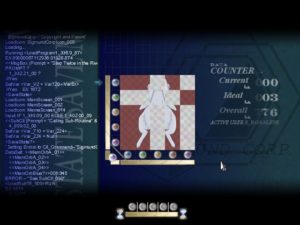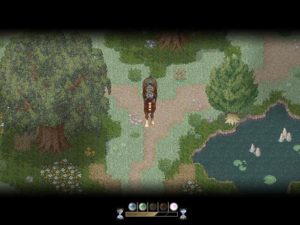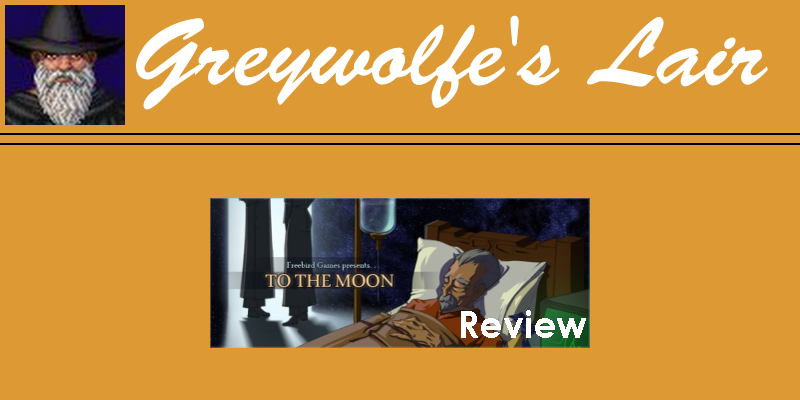Last week, we talked a little about Brothers and games very like it. These titles are often experiences more than they are games. You get into them and you direct a protagonist, but you don’t do much actual video gaming: there’s no one to kill, there’s no score to beat and – most tellingly, often, no way to really fail.
There’s just you, the story and whatever medium the story passes through as it unfolds. Sometimes, this is a walking simulator, [you are in a 3d environment where you can roam around and encounter the story] sometimes, it’s a text-driven experience where the narrative unfolds as a collection of still pictures and verbose writing, but sometimes – as is the case with To The Moon – the entire affair is top-down and looks remarkably like an old-school 16 bit RPG.
At first, that sounds like a supremely odd thing to do, but it works here. It works because a lot of the story is conveyed by dialogue and RPG’s can sometimes by very dialogue heavy.
The fact that dialogue carries To The Moon is quite important, because much of the game is framed around what people tell each other – the information that you have in your head versus the things that you tell other people.
In the case of To the Moon, we learn, early on, that Johnny – our patient in this particular game – wants to go to the moon. It is his final wish. The one thing he wanted all his life and never got. Unfortunately, Johnny doesn’t know why this is his final wish. He just wants it with all his might.
![Whenever you hit a momento - a thing Johnny treasured for some reason - you get sent back into his past, seeing the story in reverse. You can tell how far back you're going via the inographic on the screen. Go a little way and Johnny doesn't age backward very much. Go a long way and we hit a "stage" in his life [teenage years, etc.]](http://twinstiq.com/wp-content/uploads/2016/10/lighthouse-300x198.jpg)
This issue of communication starts up with her. She will do very particular things and question Johnny about those things. Johnny, of course, sees what is literally there, but River – his wife – is trying to evoke memories from long ago and far away which Johnny simply doesn’t remember.
These encounters – both with other people and when Johnny is alone, absolutely drive the story.
And this, unfortunately, might be To the Moon’s downfall with many an interested party. To the Moon is – first and foremost – a story about life and loss and how we experience our everyday lives. As a story it is a wonderful, dense revelation. Everything in To the Moon absolutely matters, from the placement of a line of dialogue to items that crop up time and again as the story unfolds. [Hans Christian Anderson’s story “The Emperor’s New Clothes” crops up very early and then – in a writing feat that is quite staggering for first time writer Ken Gao – it keeps showing up to drive the point home that we often perceive things very differently.]

This very story-driven approach means that it is very light on actual gaming. There are – very occasionally – choices to make, but these tend to get swept along by the story. There are origami paper folding segments that drive home the themes of the story by showing – close-up – items that Johnny was attached to. There’s even a “boss battle” of sorts that showcases what the engine can do, but most of this stuff is secondary to the plot.
These rare attempts to add a gaming element to the story feel awkward and a little tacked on. The “boss battle” [a “fight” in a hallway over control of the simulation we inhabit] goes overlong and doesn’t really yield anything constructive, except to show that yes, indeed, the simulation can break down, giving us glimpses of Johnny’s internal horror.
Otherwise, To the Moon completely succeeds. The sixteen bit style feels forced and awkward at first – you wonder if this wouldn’t have been better as, perhaps, an all-text game, but then the style grows on you. Likewise, the music that propels the game is all spot on. Johnny played piano, and this particular instrument is used to great effect throughout the run-time of the game.

This is a game I love. Each time I come back to it, I discover something else to savour. Whether it is the simple friendship between Johnny and Nicholas or the endless banter between Eva and Neil, each play through is a pleasant revelation.
I can almost wholeheartedly recommend this particular game to anyone who is willing to set aside four or so hours to experience all it has to offer. Though, this recommendation comes with a VERY giant caveat.
To the Moon’s story is utterly driven by emotion – a lot of the narrative is tied up in the fact that Johnny is going to die and that the limited time Eva and Neil have left to help him is critical. There’s no timer here, but the things that you will experience through Johnny’s lifetime all build on one another to create a very intense series of revelations that will hammer you quite hard if you’re in the right frame of mind.
Should you choose to play, you should probably make sure that you have a box of tissues handy. Tears will be shed.
I did a let’s play of To the Moon. You can watch it here.

